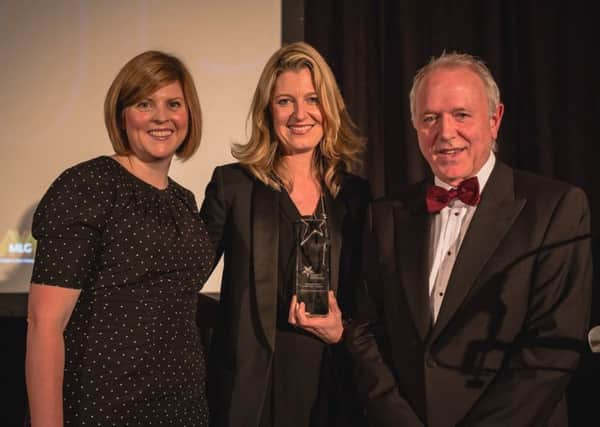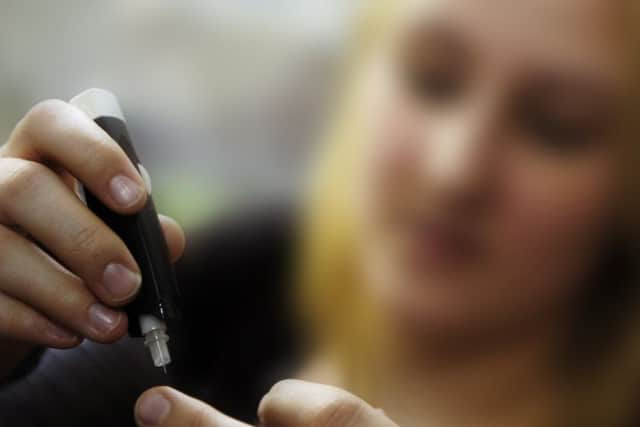New type 1 diabetes treatment hope


Type 1 diabetes isn’t linked to lifestyle and there is nothing anyone can do to prevent it. It is an autoimmune condition meaning that for reasons not yet fully understood, the immune system, which should protect the body against viruses and bacteria, attacks and destroys the insulin, producing “beta” cells in the pancreas.
We need insulin to move the energy from our food – glucose – from the blood into our body’s cells. Without it, glucose levels in the blood start to rise and the body can’t function properly. For those with type 1, it means the constant monitoring of blood glucose levels and insulin delivery via an insulin pump or injections. At its worst, type 1 causes the body’s organs to shut down. This condition affects 400,000 people in the UK, including 29,000 in Scotland. Incidence is increasing by about four per cent each year, particularly in children under five, with a five-fold increase in this age group in the last 20 years. Scotland has the third-highest incidence of type 1 diabetes in the world.
Advertisement
Hide AdAdvertisement
Hide AdThe hope for everyone living with type 1, including parents of children with the condition, is that research is transforming their lives, improving treatments until a cure is found. In the past 30 years, that research has radically expanded our understanding of type 1. We have come a long way in the past six years, as research in the UK has accelerated.


JDRF partnered with KalVista Pharmaceuticals in 2012 to investigate a new approach to combating retinopathy. KalVista’s drug in development protects the eye from prolonged high blood glucose damage.
In 2014, a method for producing large quantities of new beta cells from embryonic stem cells was discovered. The advance was heralded as one of the top ten scientific advances of the year. It offers hope of a new way to replace the body’s own damaged beta cells. JDRF is also working with the medical technology company ViaCyte to fund the human trials of its “encapsulation” technique. This places beta cells inside a device that protects them from the immune system while still allowing them to produce insulin in response to changing glucose levels in the blood.
Next year, the first “artificial pancreas” is expected to be available for patients, following its approval in the United States last month. This piece of technology automatically delivers insulin into the body in response to changing glucose levels. It combines an insulin pump, a continuous glucose monitor and an algorithm to manage type 1 diabetes.
Over the past decade, JDRF has invested more than £1 billion globally in diverse artificial pancreas research projects and there is no doubt that we have reached a significant milestone. But there is still much work to be done before this and other artificial pancreas systems can be widely available here and around the world.


We are learning more about type 1 diabetes at an exponential rate and in Scotland, where JDRF currently funds nearly £4m of research, we are in a unique position to drive the pace of discovery even harder.
Scotland is the envy of the world of type 1 research not only for its wealth of biotech and lifescience talent, but also because of its unique clinical infrastructure. The SCI-DC is a comprehensive database of those living with type 1 and it provides a unique research-platform. Scotland also has the Diabetes Research Network Type 1 Diabetes Bioresource, which holds blood samples of more than 5,500 people, with information on the patient’s diabetes history. Patients are engaged and willing to support research.
Against such a backdrop, Scotland has the potential to become a centre of excellence for type 1 research and JDRF is open to new ideas and ready to commit its support to others who want to see the cure for type 1 diabetes as quickly as possible.
Advertisement
Hide AdAdvertisement
Hide AdThere is a momentum and there is hope. We work with partner organisations across the world, offering a networked community focused on making life better for those living with type 1. There are funding opportunities for research that moves us along our roadmap towards beating type 1 for good.
Peter Jones is the Chair of the JDRF Scottish Development Group